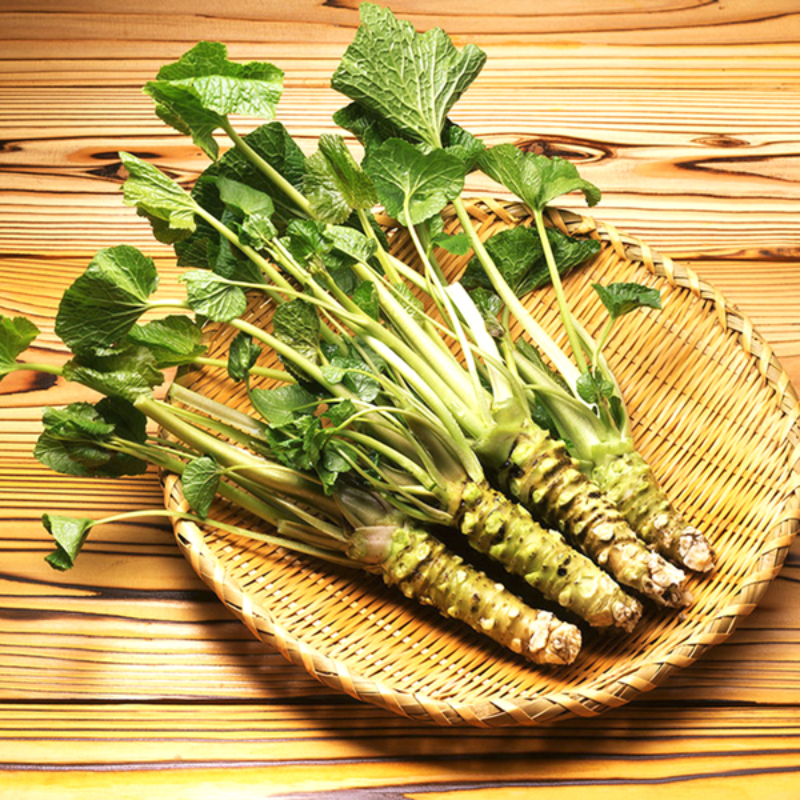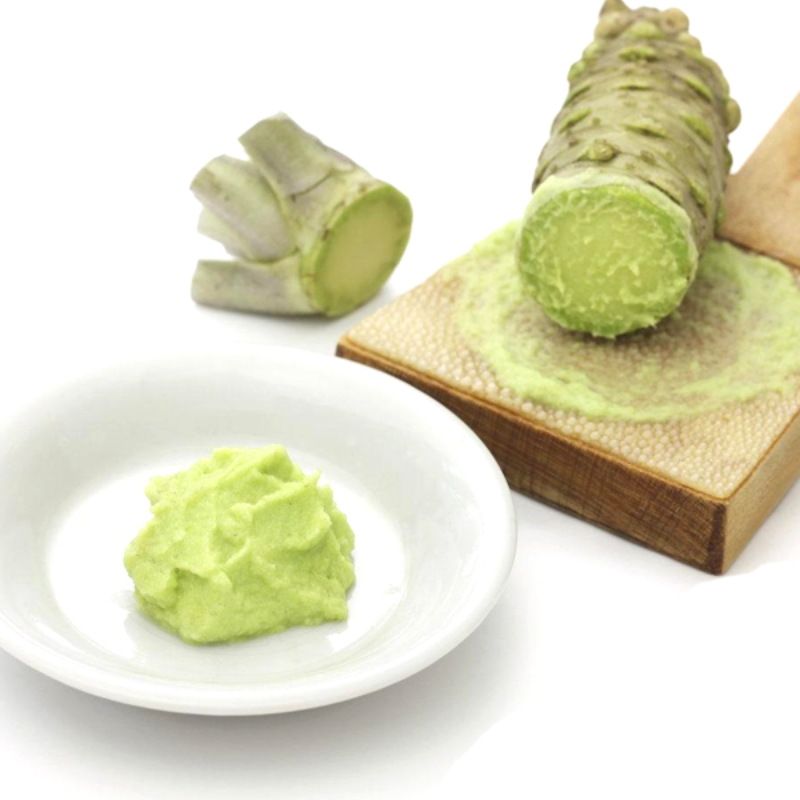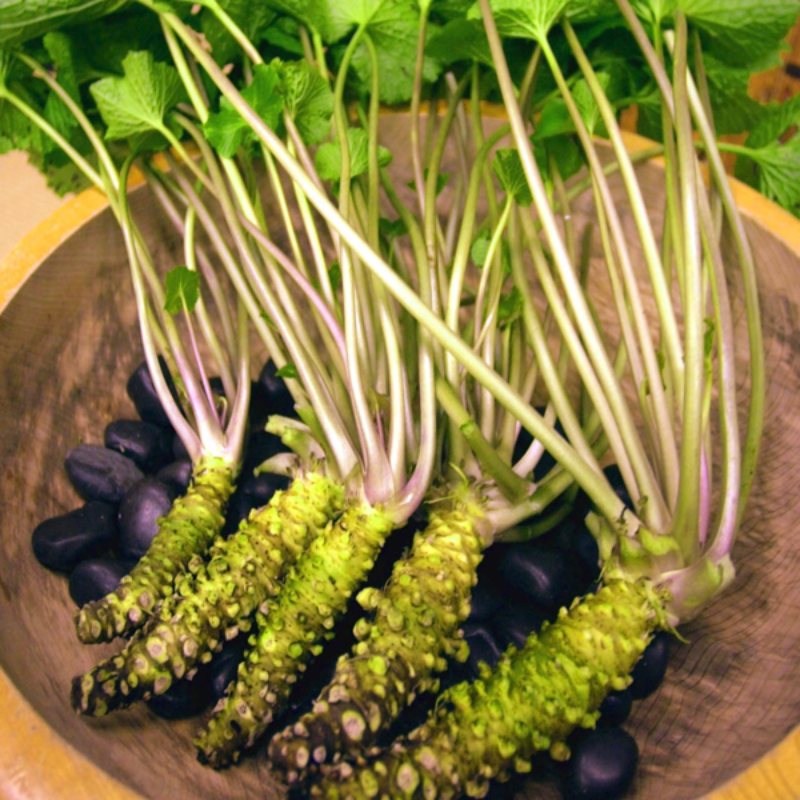- Species and varieties: Wasabi (Wasabia japonica) is a member of the Brassicaceae family, which also includes cabbages, horseradish, and mustard. There are two main varieties of wasabi: 'Daruma' and 'Mazuma'. Both varieties are prized for their pungent rhizomes, which are used to make the famous wasabi paste.
- Hybrid or heirloom: Wasabi seeds are typically heirloom varieties, as they are often propagated through traditional methods rather than hybridization. Heirloom wasabi plants are valued for their authentic flavor and quality.
- Pruning and training: Wasabi plants do not require extensive pruning. However, removing any yellowing or dead leaves can help maintain plant health. Training is not necessary for wasabi plants, as they grow naturally in a rosette form.
- Fertilization needs: Wasabi plants benefit from a balanced, slow-release fertilizer applied every few months. A fertilizer with equal parts nitrogen, phosphorus, and potassium (such as a 10-10-10 formula) is recommended. Additionally, organic matter such as compost can be added to the soil to improve fertility and moisture retention.
- Hardiness zones: Wasabi is best suited for USDA hardiness zones 8 to 10. It requires a cool, temperate climate to thrive.
- Climate requirements: Wasabi plants prefer a climate with temperatures ranging between 45°F to 75°F (7°C to 24°C). They require a shaded environment with high humidity and consistent moisture. Wasabi plants do not tolerate direct sunlight or extreme temperatures well.








